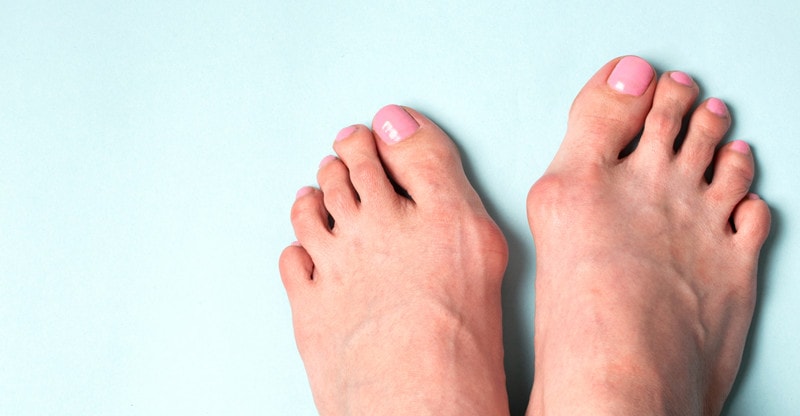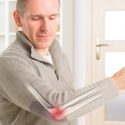Common Foot Problems You Can Experience In Life
Your feet allow you to walk, run, jump, and do other physical activities. But it doesn’t mean that these body parts are impervious to damage. You must understand the most common foot problems in order to rectify these issues. Oftentimes, the solution is quite simple and the problem can be fixed by wearing a pair of shoe insoles.
Keep reading to know these common foot concerns that you may experience in life.
Athlete’s Foot
Do you feel a burning, itchy, and stinging sensation in your feet and toes? Aside from the burning, itchy, and stinging feeling, you’ll also encounter other symptoms, like foot blisters and cracked skin on the feet. These are signs of athlete’s foot.
This contagious issue surfaces after your feet come into contact with fungi, which tend to come from wet environments. Walking on damp surfaces without proper protection can put your feet at risk of acquiring this problem.
Some places where you might acquire this concern are:
• Gym locker rooms
• Public showers
• Public swimming pools
• Forests
It’s possible to treat an athlete’s foot with remedies, like tea tree oil and garlic. But some cases tend to need more help than home DIY solutions. If this particular foot problem becomes unbearable, consult a doctor for an expert athlete’s foot treatment.
Bunions
If you see bumps on your large toe joint, these things might be bunions. These bumps can cause the big toe to turn inward, albeit slightly. Nonetheless, it can appear from increased pressures from wearing incorrect-fitting footwear. Women tend to be more susceptible to having bunions than men.
Moreover, jogging or running while wearing shoes that don’t fit comfortably can increase the risk of bunions to appear.
Wearing tight shoes will put pressure on the metatarsophalangeal joint (MTP), which is the area at the end of the foot meets the big toe’s bone. Genetics also plays a role in the appearance of bunions.
You’ll know if you’re about to experience bunions when you see or feel:
• Visible bumps
• Calluses or corns
• Pain in the big toe
• Difficulty in moving the big toe
Bunion treatment starts by wearing the right shoe size. Avoid the heels for now as these components might put unwanted pressure on big toes. Also, apply ice over the affected area for about 10 minutes per day to help reduce the inflammation. Consequently, you can purchase a bunion pad at drugstores or shoe stores to protect the MTP from unwanted pressure.
Corns and Calluses
The hard, thickened skin on your feet are corns and calluses, and these problems appear because of additional friction or pressure on the skin. Although many individuals see these patches of skin as a problem, it’s actually a defensive mechanism to protect the skin. Nonetheless, these things look unappealing to your eyes.
Corns appear because of bone pressure against the skin. Conversely, calluses develop when you apply repeated friction on a specific area. Bodybuilders and weightlifters tend to have calluses on their arms because of lifting heavyweights. Another cause of corns and calluses are wearing ill-fitting shoes, which might also put your feet at risk of receiving bunions.
Here are several remedies to remove corns and calluses:
• Soaking the affected area in warm water for about 10 minutes every day until the skin softens.
• Use a pumice stone to file the corn or callus.
• Apply moisturizing cream or lotion to the affected area daily.
• Wear properly-fitting footwear.
Ingrown Nails
An improper cut to the toenail can result in an ingrown nail. As the toenail grows, it adds unwanted pressure and pain on the toe’s borders. In turn, the offending nail can cause infection, pain, and swelling.
You can prevent ingrown nails by ensuring to properly cut the toenails. If you’re unsure about your nail-cutting procedure, don’t hesitate to visit a pedicure salon.
If you already have ingrown nails, you can relieve the discomfort by cutting the offending nail correctly. Start by soaking the foot in a mixture of lukewarm water and salt. Next, cut the nail, but prepare yourself to feel some degree of pain.
After removing the offending part of the toenail, apply an antiseptic. Don’t forget to bandage the area to avoid further infection.
Talk to your doctor if self-care procedures prove to be unsuccessful and the discomforts persist for days. The medical expert might recommend minor surgery to remove the ingrown nail.
Plantar Fasciitis
That pain you feel at the bottom of your heel or near the bottom part of your middle foot might not be a seemingly small discomfort. Pain in these areas can be plantar fasciitis, which appears when strain enters the plantar fascia ligament.
Some causes of plantar fasciitis include:
• Frequent standing
• Wearing soft-soled footwear with poor arch support
• Weight gain
• Long-distance running
Aggravating existing foot conditions also lead to plantar fasciitis. Moreover, the damage and pain from this concern might not be obvious at first. But the discomfort will accumulate with continuous activity and time.
Treatments for plantar fasciitis depends on the severity of the concern. Home-based treatments, such as ice packs and over-the-counter anti-inflammatory medications, are practical for relatively new cases. Stretching will also relieve the discomfort of this issue.
But, severe cases need additional treatment options, such as corticosteroid injections, orthotics, physical therapy, and surgery.
Heel Spur
A heel spur happens when a calcium outgrowth develops between the foot arch and heel bone. Many people won’t even notice heel spurs because the symptoms don’t seem to appear. But, some individuals might find the discomfort unbearable as heel spurs lead to painful inflammation.
It can be challenging to confirm if the pain you feel in the area between the foot arch and heel bone is a heel spur. Flat feet can be a common cause for heel spurs, and the easiest solution is to get specialized orthotics for flat feet and resolve the problem. Consider getting a diagnosis from a doctor, which might require medical imaging for confirmation.
Some of the causes of heel spurs include arthritis, obesity, and long-term strain on the ligaments and muscles on the feet. Wearing ill-fitting footwear can also cause this foot concern.
Heel spurs are curable with the continuous application of cold compresses. But, severe cases may require injections and orthotic shoe inserts.
Blisters
Don’t risk the health of your poor feet by wearing ill-fitting shoes, regardless of the footwear that will increase your style game. By now, you should already have an idea that wearing uncomfortable footwear is one of the primary causes of many feet problems. Now, you can add blisters to that list.
It’s safe to say that you won’t have blisters if you’re wearing shoes that fit correctly and comfortably. If your shoes don’t fit well, the soft, raised pockets on your skin’s feet will fill with clear fluid. In turn, this unwanted appearance will cause pain and make walking more challenging than usual.
If you see a blister in your feet, avoid the temptation of picking it. First, clean the area thoroughly. Sterilize a sewing needle by dipping it in hot water. Use the needle to open the blister nearest to the foot’s underside.
Next, drain the water out of the blister by pressing on it lightly. You may feel slight pain when you do this step. Apply antibiotic ointment on the blister after confirming that water doesn’t pour out of it anymore. Cover the wound with a bandage to protect it from infection.
Note that blisters can also break without human interference. If so, apply the same steps mentioned above. Don’t forget to change your footwear to avoid future instances of blisters.
Hammertoes
Wearing narrow shoes with inadequate arch support can lead to hammertoes. This foot problem is relatively common for the second, third, or fourth toe. Although the condition is quite common, it can be extremely painful if it appears.
Hammertoes appear because of the application of a continuous imbalance to the surrounding ligaments, muscles, or tendons on the toes, which would normally keep them straight. Failure to fix this foot concern quickly will result in long-term or permanent damage. At that point, surgery might be the best option to treat the condition.
Still, you can treat mild cases of hammertoes using home remedies. Some of these solutions are:
• Picking up small objects (e.g., marbles and toys) with your toes.
• Start wearing correct-fitting footwear.
• Stretch the toe several times a day gently.
• Use over-the-counter corn pads and foot straps.
As for severe cases of hammertoes, your doctor can suggest possible surgical procedures, such as:
• Arthroplasty – The removal of half of the joint under the crooked area of the toe to help it straighten.
• Arthrodesis – Similar to arthroplasty, but the surgeon removes the entire joint instead. Then, the medical professional inserts a pin or wire to help with the healing.
• Tendon transfer – The removal and transferring of the offending joints to aid in the straightening.
• Basal phalangectomy – The removal of the bone underneath the toe.
Key Takeaway
Foot problems, like athlete’s foot, ingrown nails, bunions, and corns and calluses are among the few of the many common foot issues you can encounter. It’s possible to treat these issues at home using DIY techniques or over-the-counter medicines. But don’t hesitate to consult the advice of a doctor if the symptoms persist.



